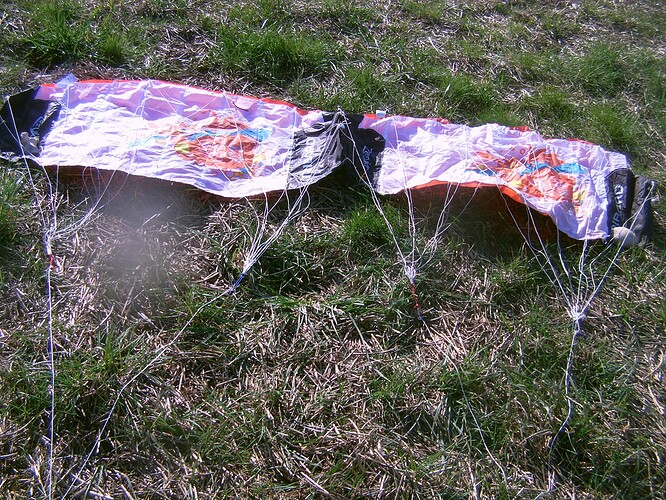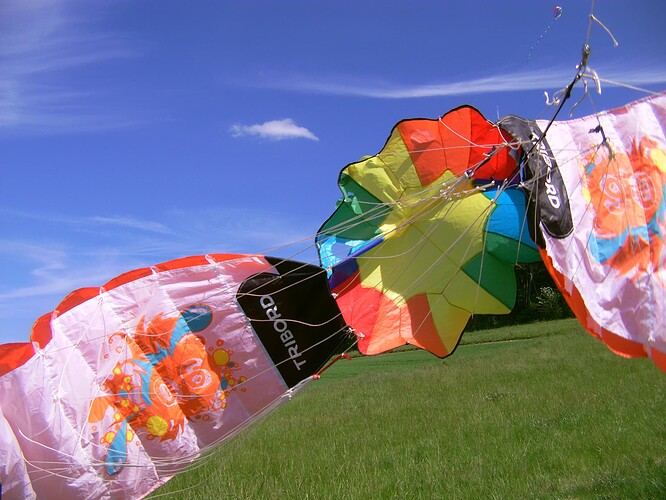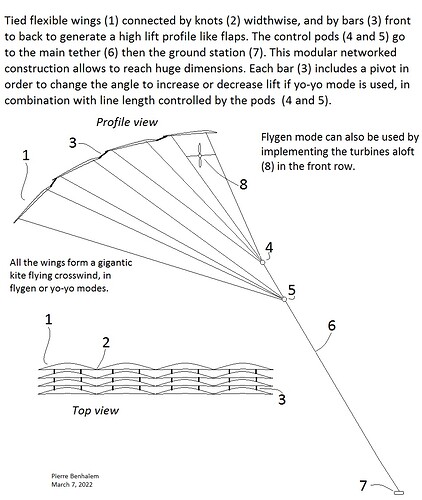Yes, as for all the wings, excepted if the central parachute provides enough lift to support the rotating wings. But for that it should be huge, but not huger than any adapted lifter kite.
I guess that asks the question
What is the least actuation a rotor needs to stay airborne as an AWES?
Good question. Perhaps a simple mechanism could be found in order to keep the rotor airborne, something moving the lines, avoiding the relative complexity of a computerized pod.
Now if the rotor diameter is about 1 km, the rpm will be very low (about 1!), as for the frequency of the required (mechanical?) action on said lines.
A few tries today and the illusions are gone. The (only) two wings attached in crosswind flight (see photo and video below) are uncontrollable, even for less than 1 second, due to the linkage acting as a hinge.
On the contrary the rotor which is on the previous video and the photo below turns very well.
A good pilot kite has a L/D ratio of 2.4. This does not give much room to increase lift, which amounts to increasing the angle of attack (on a 4-line kite we play with the 2 brake lines) and further reducing the L/D ratio. See also the discussion on Using a lifter kite as a low aspect ratio power kite.
I imagined some means (see the sketch below) to increase the lift coefficient, but the mentioned tests just above do not encourage me to go further.
That’s what I would have thought. Yet it is a flygen system that uses high lift multi-element airfoil: High lift coefficient and biplane kite and kiteKRAFT fly-gen kite flew figure-eights.
I could agree. The largest wind turbines are about 150 m in diameter with a 100-120 m tower. So, to be competitive, AWES would have to be 1 km in diameter with tethers of 1 km-2 km long.
Once a possible model is identified, it should be quite possible to produce it in small dimensions and to evolve it little by little if necessary, and according to the possible intermediate markets if they exist.
In the conquest of space, we tried to identify the devices needed to escape the earth’s gravity, then we tried to venture into space. They didn’t necessarily build a small rocket to go up to 10 m, then a slightly larger one to go to 100 m, etc.
I think the same is true of AWES. Originally designed to go and find the most powerful and regular winds at high altitude, we have not yet found a flying machine that would allow us to capture a surface area of wind proportional to the volume invested in space, so a huge flying machine. This is where research should focus.


